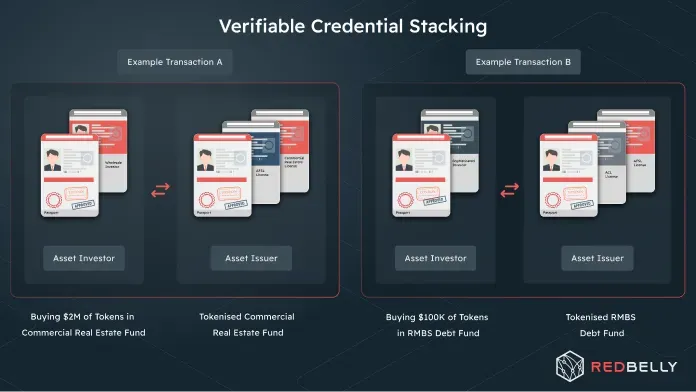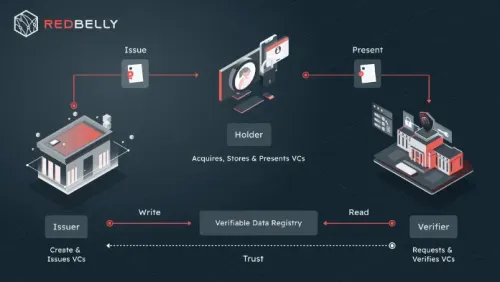In the high value and high stakes world of real-world asset tokenisation, identity verification and user accountability are critical to the success of any network or protocol.
In our last blog we talked about how verifiable credentials work to combat the risk of forgery and fraud by providing a model for digital identity that replicates physical credentials like passports and driver's licenses in a cryptographically signed digital format.
This approach to proving identity and ensuring accountability will form the digital identity model behind our user-access dApp for Testnet and beyond, but we’re not stopping there. Our team has been working to extend the use of Verifiable Credentials beyond identity and into the world of asset-specific licensing for regulatory compliance.
If we take financial services products as an example, long-established regulatory frameworks around the world require asset issuers to hold licenses that cover the types of products and services that they offer to customers. Examples of this are the need to hold a national or international banking license for OCC compliance in the USA, the authorisations needed from the Financial Conduct Authority (FCA) in the UK, and licenses such as the Australian Credit Licence issued by ASIC here in Australia.
Investors are required to prove their identity but also to complete granular checks to qualify to invest substantial amounts in more complicated or higher risk assets. Whether you are a wholesale, sophisticated or retail investor, according to your license, and who you’re investing for, can dictate much of what and how and how much you can invest.
Our unique composable architecture has been custom-built with exactly these challenges in mind. Just as our architectural components are composable around a core technology stack, so too can different verifiable credentials be ‘stacked’ together on Redbelly to create a digital identity that ensures the right users get the right access to the right assets.
In the Australian market for example, a wholesale investor could buy tokens in a tokenised commercial property fund without having to provide further proof of their investor status outside of the blockchain transaction. A lending company could provide details of their Australian Credit Licence (ACL) and Australian Financial Services Licence (AFSL) when issuing a tokenised RMBS fund in order to raise further capital.

This ‘stacking’ approach works in the same way for all asset issuers needing to complete anti-money laundering (AML) and counter-terrorism financing (CTF) checks. As elements of the critical Know-Your-Customer (KYC) regime that businesses rely on heavily for legal compliance, these checks can be performed on customers using their provided stacked identity credentials, saving time, money and reducing risk.
Ultimately, the impact of using this stacking of verifiable credentials as our model of digital identity enables Redbelly to provide a solution that works for both asset issuers and investors, because it can be extended into multiple different types of asset class, while incorporating compliance with regulations. It’s compatible both with the past and with the future, and it means the ability to create and sustain trustworthy markets full of known, licensed and accountable users. Only Redbelly is custom-built to enable these markets.
Testnet is right around the corner, and the best way to prepare is to get your passport ready to be used to obtain Redbelly Access Credentials. We’ll be publishing step by step guides on how to access our network soon.



